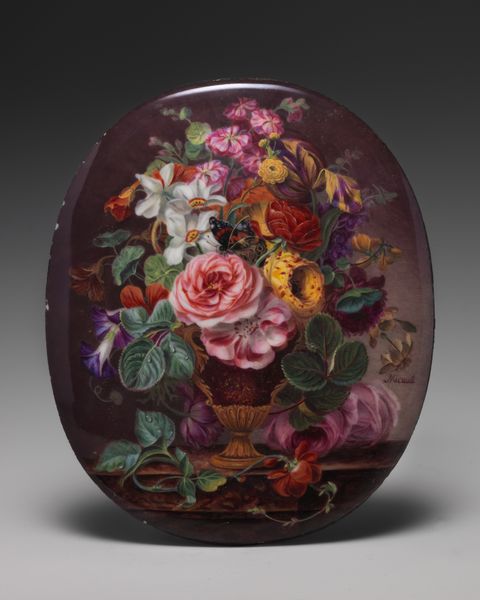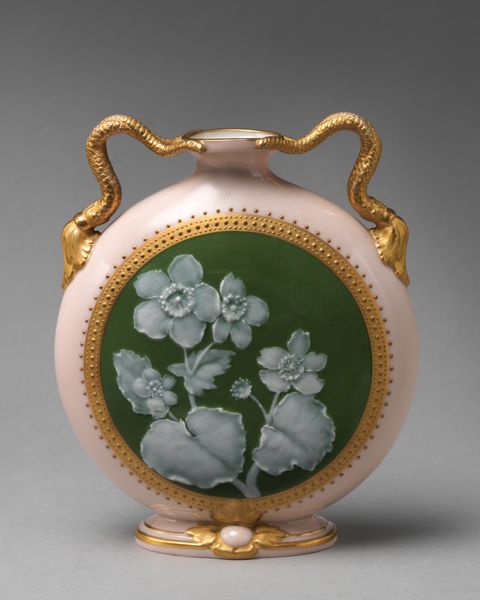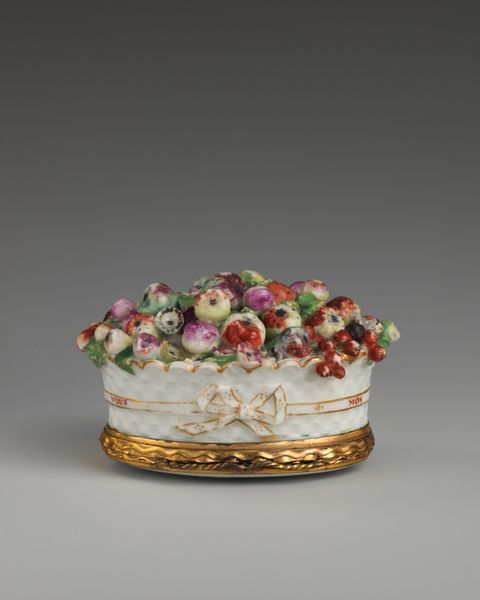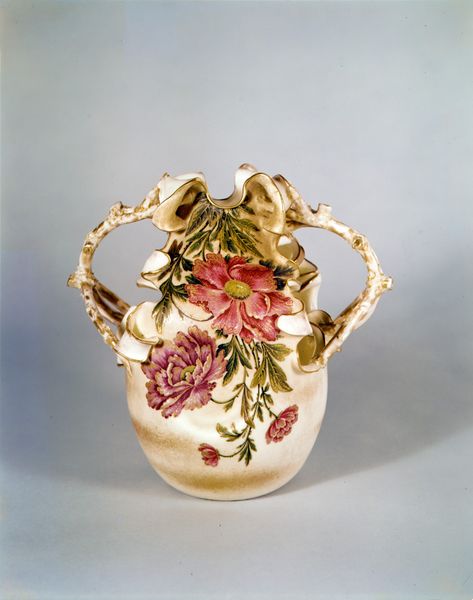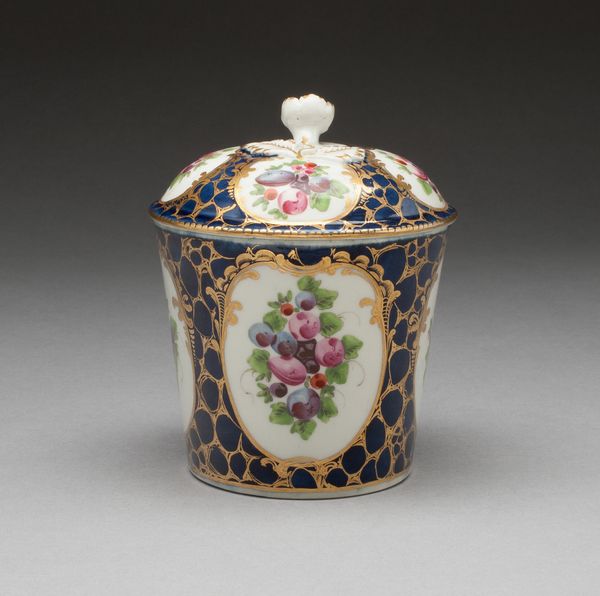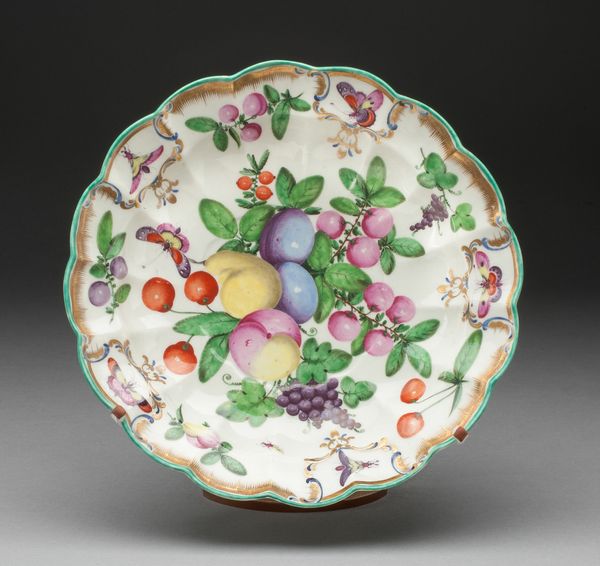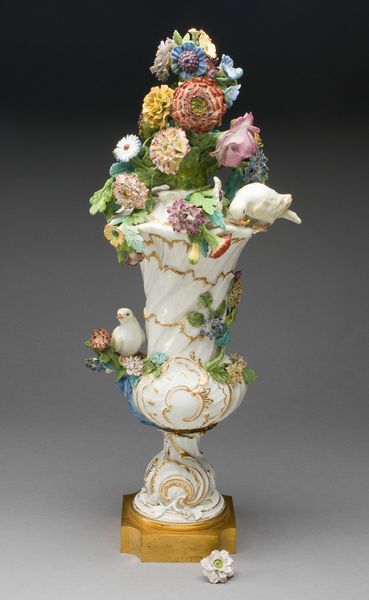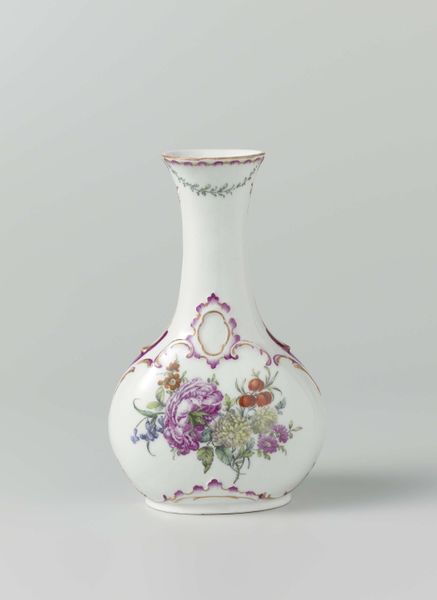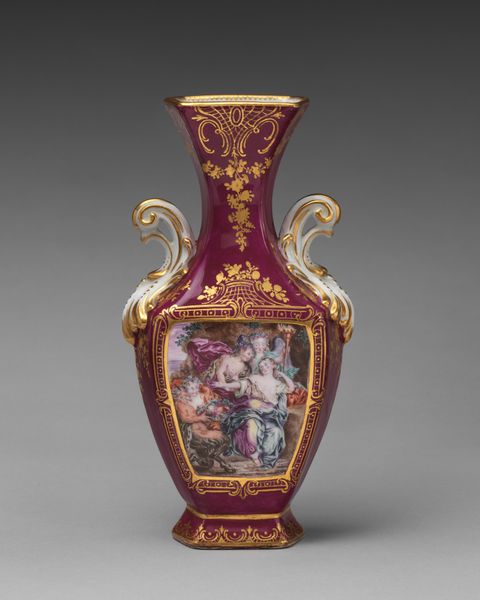
Dimensions: L. 5 3/16 in. (13.2 cm.); W. 4 3/8 in. (11.1 cm.)
Copyright: Public Domain
Curator: Look at this delightful object; it’s a ceramic plaque, painted in tempera, created sometime between 1750 and 1799. The artist is Micault, a name synonymous with the Rococo ceramic tradition. What strikes you most about this piece? Editor: It’s undeniably romantic, almost overwhelmingly so. The profusion of blooms feels so lush, verging on decay even. There’s a definite sweetness, but also something bordering on melancholic. Curator: I think you've touched on something important. Floral arrangements like this, particularly during the Rococo period, often functioned as symbols laden with cultural meanings. Roses for love, tulips for… well, fleeting beauty. Editor: The inclusion of the bird's nest—isn’t that an obvious symbol of fertility and the home? It seems incredibly straightforward. Is it trying to be something deeper? Curator: Symbolism isn't always about obscure hidden meanings. The explicit imagery could speak to widely held values, reinforcing ideas about domesticity, natural beauty, and the ephemeral nature of life during a particular historical moment. Think of the Rococo period as performative elegance and idealization; the bird's nest nests perfectly into that paradigm. Editor: And the butterfly perched among the blooms – another classic memento mori motif, right? Given the plaque’s oval shape and its small size, what purpose would such an object serve? Was it purely decorative, or did it serve some other function? Curator: That's an excellent point. Oval plaques like this, fashionable at the time, were indeed primarily decorative. Aristocratic salons might showcase these plaques alongside other exquisite objects, signifiers of wealth and refined taste. They also offered an opportunity to demonstrate skill in both ceramic production and painting. Editor: It really makes you consider what Rococo artistry prioritizes – aesthetic pleasure for an exclusive class of owners? The technical skill seems undeniable, yet perhaps detached from any serious social critique. Curator: Precisely! It serves as a tangible piece of social history, representing very particular values. Thinking about it in this light brings an added perspective. Editor: Indeed, recognizing its place within a particular cultural mindset certainly changes my understanding. It becomes a snapshot of priorities, doesn’t it?
Comments
No comments
Be the first to comment and join the conversation on the ultimate creative platform.
